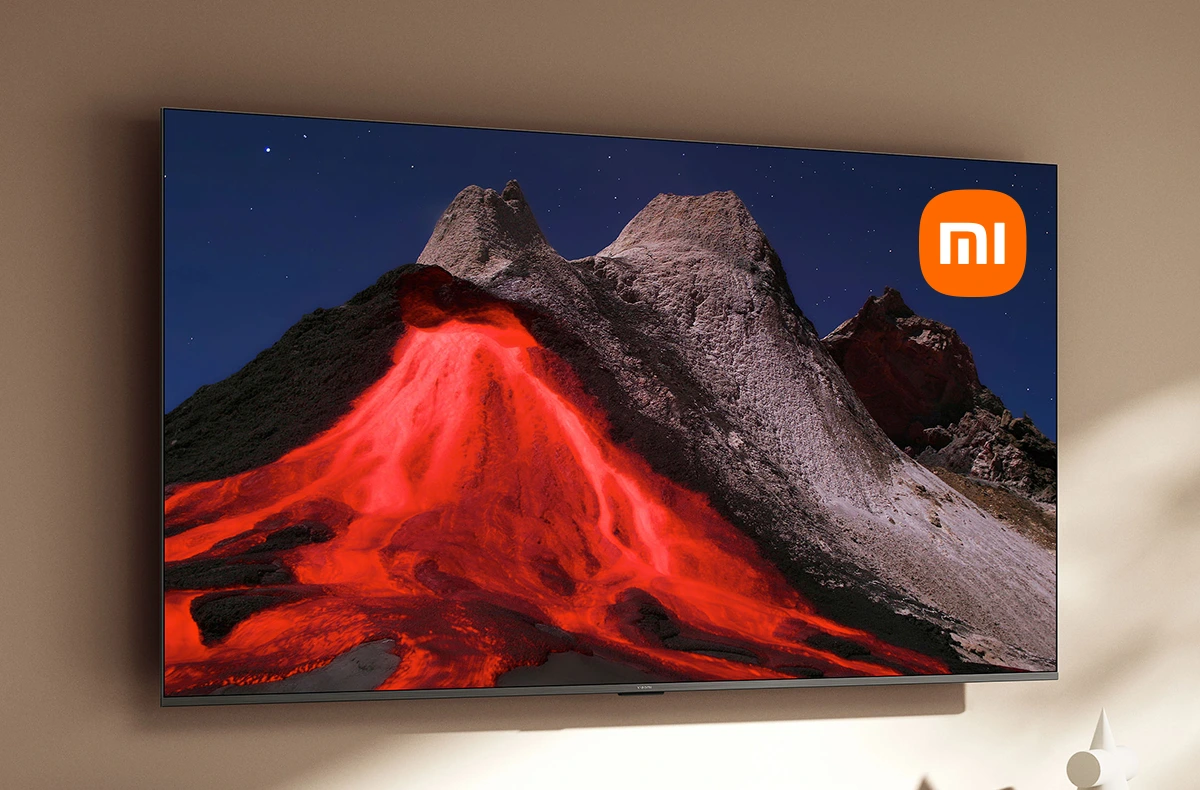Xiaomi Expands 2026 TV Lineup to Europe: What U.S. Viewers Can Expect
By Archyde News Journalist
Xiaomi is broadening teh availability of its 2026 TV series in Europe, launching select models in Western and Northern European countries. This expansion follows the initial global declaration in March,which included models ranging from 43 to 75 inches. While Czech customers may have to wait, this european rollout provides valuable insights into what U.S. consumers might expect from Xiaomi’s future TV offerings.
The move signals Xiaomi’s continued commitment to the global TV market, challenging established brands with competitive pricing and features. As U.S. consumers increasingly seek value-driven entertainment options, Xiaomi’s strategy in Europe offers a glimpse into its potential impact on the American market.
European Launch Focuses on Mid-range Sizes
The Xiaomi TV A pro 2026 series is currently available in official Xiaomi e-shops in Germany, the Netherlands, and Sweden. These countries offer the 55, 65, and 75-inch models. The smaller 43 and 50-inch variants, initially announced globally, are not yet available in these markets. The absence of the smaller sizes raises questions about Xiaomi’s market segmentation strategy and whether these sizes will eventually make their way to the U.S. market.
here’s a breakdown of the european pricing:
| Model | Price (EUR) | Approx. Price (USD) |
|---|---|---|
| 55″ Xiaomi TV A Pro 2026 | €479 | $510 |
| 65″ Xiaomi TV A Pro 2026 | €649 | $690 |
| 75″ Xiaomi TV A Pro 2026 | €849 | $905 |
These prices position Xiaomi as a competitive player in the mid-range TV market. For context, last year’s Xiaomi TV and for 55 (2025) sells for approximately $450 in some European markets. This suggests that the new generation aims to directly replace existing models while offering enhanced features.
key Features of the xiaomi TV A Pro 2026
The TV A Pro 2026 series boasts a 4K QLED panel, covering 94% of the DCI-P3 color space, according to Xiaomi. While the native refresh rate is 60Hz, the TVs incorporate MEMC with 120Hz motion rate support, designed to smooth motion in fast-paced content like sports and action movies.
For gamers, a dedicated Game Boost mode aims to minimize input lag during console or PC gaming. the HDMI ports support eARC and ALLM (Auto Low Latency Mode) technologies, further enhancing the gaming experience.
in terms of picture quality, the TVs support HDR10+ and HLG. A Filmmaker Mode is also included, disabling image smoothing and other processing to present films as the creators intended. Though, it’s vital to note that the TV A Pro series is considered an entry-level line, and may not have the high brightness levels needed to fully showcase high dynamic range content.
The inclusion of Filmmaker mode is a nod to cinephiles, similar to features found in higher-end models from brands like Sony and LG. This feature appeals to viewers who prioritize accuracy and artistic integrity in their viewing experience, mirroring trends seen in the U.S. market where home theater enthusiasts demand precise image reproduction.
Connectivity and Smart Features
The TVs are powered by Google TV, providing access to a vast library of apps, including popular streaming services like Netflix, Hulu, and Disney+. Connectivity options include Google Cast for mirroring content from android or Windows devices, as well as Miracast and Apple AirPlay. AirPlay support is a notable addition compared to last year’s models, catering to iPhone and iPad users.
Support for wireless image transmission from Apple device is one of the innovations compared to last year’s models and will delight the owners of iPhones or iPads.
Physical connectors include HDMI with eARC and ALLM support, USB 2.0, and standard ports. Dual-band Wi-fi (2.4 GHz/5 GHz) and Bluetooth 5.0 are used for wireless connectivity.
The broad connectivity suite, including AirPlay, is crucial for U.S. consumers who frequently enough own devices from multiple ecosystems.The integration of Google TV aligns with the growing demand for seamless streaming experiences,a key battleground in the American TV market.
U.S. Availability: What to Expect
While the Xiaomi TV A Pro 2026 series is currently launching in Europe, there’s no official word yet on U.S. availability. Given Xiaomi’s increasing global presence, it’s plausible that the company will eventually bring these models to the American market. However, several factors coudl influence this decision, including:
- Market demand: Xiaomi will likely assess the demand for affordable QLED TVs in the U.S. market.
- Competition: The U.S. TV market is highly competitive, with established players like Samsung, LG, and Sony. Xiaomi would need to offer compelling value to gain market share.
- Regulatory hurdles: Meeting U.S. regulatory standards and certifications could impact the timeline for a potential launch.
- Distribution partnerships: Establishing partnerships with major retailers like best Buy or Amazon would be crucial for reaching U.S. consumers.
If Xiaomi does launch the TV A Pro 2026 series in the U.S., it could disrupt the market by offering a combination of QLED technology, smart features, and competitive pricing. This could particularly appeal to budget-conscious consumers and those looking to upgrade from older, non-smart TVs.
The Broader Implications for the U.S. market
Xiaomi’s European expansion underscores the growing trend of Chinese electronics manufacturers entering and disrupting established markets. Companies like TCL and Hisense have already gained significant traction in the U.S. TV market by offering affordable options with impressive features. Xiaomi’s potential entry could further intensify competition and drive down prices for consumers.
Though, there are also potential challenges for Xiaomi in the U.S. market. Brand recognition is still lower compared to established brands, and concerns about data privacy and security could deter some consumers. to overcome these challenges, Xiaomi would need to invest in marketing and public relations to build trust and brand awareness.
Ultimately, xiaomi’s success in the U.S. market will depend on its ability to offer compelling products at competitive prices while addressing consumer concerns about security and privacy. The European launch of the TV A Pro 2026 series provides valuable insights into Xiaomi’s strategy and its potential to disrupt the American TV landscape.
Considering the competitive landscape and consumer demands, what would you consider the “make or break” factor for Xiaomi’s success in the U.S. TV market?
Xiaomi’s European TV Launch: An Interview with Tech Analyst, Anya Sharma
By Archyde News Journalist
Archyde News: Welcome, Anya! Xiaomi’s recent European launch of the 2026 TV A Pro series has generated a lot of buzz. As a Tech Analyst,what’s your initial reaction to this move,and what does it signal for the U.S. market?
Anya Sharma: Thanks for having me! The European launch is a significant step for Xiaomi, demonstrating their commitment to compete in the global TV market. It’s a strategic move to gain a foothold in Europe before potentially expanding into the U.S. It signals a willingness to challenge established brands with competitive pricing and features, which consumers, particularly in the mid-range market, will appreciate if brought stateside.
Xiaomi TV A Pro 2026: A Closer look
Archyde News: Focusing on the specifications, the TV boasts a 4K QLED panel, MEMC with 120Hz motion rate support, and a dedicated game Boost mode. How do thes features position the Xiaomi TV A Pro 2026 against its competitors like TCL and Hisense, particularly in the mid-range price bracket?
Anya sharma: Xiaomi is essentially targeting a value proposition. The QLED panel, coupled with the motion smoothing and Game Boost mode, covers the bases for both casual viewers and gamers. while it might not compete with the top-tier models from Sony or LG, the inclusion of features like Filmmaker Mode and Airplay support suggests Xiaomi is trying to cater to broad consumer interests, and it does it at the expense of other brands in the same bracket. That price point is key. If the U.S.prices mirror the European ones, this could be very attractive.
U.S.Market Expectations
Archyde news: The article highlights that there’s no official word on U.S. availability yet while also noting the potential influence of market demand.What are the biggest hurdles Xiaomi faces if they decide to launch in the U.S.?
Anya Sharma: Several hurdles exist. Brand recognition is lower than established brands like Samsung and LG. They’ll have to educate consumers on the product offerings. Also, they need to navigate the highly competitive U.S. market, which means creating effective marketing, establishing key distribution partnerships, and possibly adjusting pricing based on consumer price sensitivity in different regions. Meeting U.S. regulatory standards is another consideration, which can influence the timeline for deployment.
Smart Features and Connectivity of the Xiaomi TV
Archyde News: The integration of Google TV and support for AirPlay are interesting aspects. How vital are these features in attracting U.S. consumers, who are increasingly reliant on streaming and multi-device ecosystems?
Anya Sharma: They’re crucial. The Google TV platform provides a user-pleasant interface and access to a wide range of apps, aligning with U.S. consumers’ preferences. Apple AirPlay support is particularly important because it caters to iPhone and iPad users. A broad connectivity suite, including both Google Cast and AirPlay, makes the TV adaptable to different device ecosystems, which is very important in the U.S. market.
Competitive Landscape and Broader Implications
Archyde News: Xiaomi’s potential entry could intensify competition and drive down prices for consumers. However, the article mentions concerns around brand recognition and data privacy. How can Xiaomi address these challenges effectively, if they enter the U.S. market?
anya Sharma: Building trust is essential. They need to invest in extensive marketing and public relations campaigns. This calls for showing the features and emphasizing the value proposition. Highlight the security measures in detail. Partnering with trusted review sites and focusing on customer service can boost consumer trust. Clarity about their data practices builds confidence. offering clear warranty and post-sales support is a must.
Final thoughts
Archyde News: considering the competitive landscape and consumer demands, what would you consider the “make or break” factor for Xiaomi’s success in the U.S. TV market?
Anya Sharma: The “make or break” factor will be their overall value proposition. It’s got to be an excellent balance of features, price, and brand perception. Can they convince U.S. consumers that they offer an excellent product at a competitive price point, coupled with robust customer support and reliable performance? If Xiaomi can deliver on that, they stand a great chance of disrupting the American TV landscape. It comes down to execution in the mid-range market.
Archyde News: Thank you, Anya, for providing insightful perspective on this launch and its impact in the U.S.market!
Anya Sharma: My pleasure.
Archyde News: For our readers: What are your expectations for the future of affordable QLED TVs in the U.S. market,and would you consider the Xiaomi TV A Pro 2026 if it were available in the United States? Share your thoughts in the comments below!








